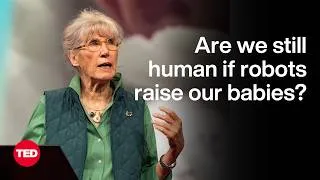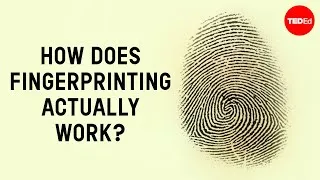Electrical experiments with plants that count and communicate | Greg Gage
3,258,514 views ・ 2017-11-01
请双击下面的英文字幕来播放视频。
翻译人员: JIE LEI
校对人员: Cissy Yun
00:12
I'm a neuroscientist,
0
12760
1256
我是位神经学家,
00:14
and I'm the co-founder of Backyard Brains,
1
14040
2296
Backyard Brains的联合创始人,
00:16
and our mission is to train
the next generation of neuroscientists
2
16360
3856
我们的使命是
培养下一代的神经学家,
00:20
by taking graduate-level
neuroscience research equipment
3
20240
3016
通过将研究生运用的研究设备
00:23
and making it available for kids
in middle schools and high schools.
4
23280
3440
融入到初高中课程中。
00:27
And so when we go into the classroom,
5
27520
1856
开始上课的时候,
00:29
one way to get them thinking
about the brain, which is very complex,
6
29400
3896
我们让他们开始思考关于大脑,
这个十分复杂的物体的一个方法,
00:33
is to ask them a very simple
question about neuroscience,
7
33320
2936
就是向他们提出一个非常简单的
关于神经科学的问题,
00:36
and that is, "What has a brain?"
8
36280
2040
“什么东西具有大脑“?
00:39
When we ask that,
9
39040
1256
当我们提问的时候,
00:40
students will instantly tell you
that their cat or dog has a brain,
10
40320
4055
学生们会马上告诉你
他们的猫或狗有大脑,
00:44
and most will say that a mouse
or even a small insect has a brain,
11
44400
4576
大多数学生会说一只老鼠
甚至一只小昆虫有大脑,
但几乎没人会说一棵植物或者树,
00:49
but almost nobody says
that a plant or a tree
12
49000
2816
00:51
or a shrub has a brain.
13
51840
2176
或者一株灌木有大脑。
00:54
And so when you push --
14
54040
2496
所以当你进一步启发他们——
00:56
because this could actually
help describe a little bit
15
56560
2576
因为这实际上可以帮助描述
00:59
how the brain actually functions --
16
59160
2176
大脑是如何运作的——
01:01
so you push and say,
17
61360
1216
所以当你继续问
01:02
"Well, what is it that makes
living things have brains versus not?"
18
62600
3536
“是什么让有些生物拥有大脑,
而有些则没有?”
01:06
And often they'll come back
with the classification
19
66160
2456
他们往往会分类作答,
01:08
that things that move tend to have brains.
20
68640
3776
那就是移动的物体拥有大脑。
01:12
And that's absolutely correct.
21
72440
1616
这绝对是正确的。
01:14
Our nervous system evolved
because it is electrical.
22
74080
2456
我们的神经系统因电流而进化。
01:16
It's fast, so we can quickly respond
to stimuli in the world
23
76560
3136
它们速度很快,
在我们需要的情况下
01:19
and move if we need to.
24
79720
2216
使我们能快速对
外界刺激做出反应。
01:21
But you can go back
and push back on a student,
25
81960
2216
但是你可以引导学生逆向思维,
01:24
and say, "Well, you know,
you say that plants don't have brains,
26
84200
3056
“很好,你说植物没有大脑,”
01:27
but plants do move."
27
87280
1456
“但它们可以移动啊。”
01:28
Anyone who has grown a plant
28
88760
1856
任何养过植物的人
01:30
has noticed that the plant will move
29
90640
1976
都会注意到植物可以移动,
01:32
and face the sun.
30
92640
1816
并且趋光。
01:34
But they'll say,
"But that's a slow movement.
31
94480
2136
但他们会说,
“这是一个缓慢的过程。”
01:36
You know, that doesn't count.
That could be a chemical process."
32
96640
3016
“这不算,那可能是一种化学过程。”
01:39
But what about fast-moving plants?
33
99680
2376
但如果是快速运动的植物呢?
01:42
Now, in 1760, Arthur Dobbs,
the Royal Governor of North Carolina,
34
102080
5096
在1760年,北卡罗莱纳州的
皇家总督亚瑟▪多布斯
01:47
made a pretty fascinating discovery.
35
107200
2536
发现一个很有趣的现象。
01:49
In the swamps behind his house,
36
109760
2856
在他房子后面的沼泽地,
01:52
he found a plant that would spring shut
37
112640
3656
生长着一种植物,每当有虫子落在
01:56
every time a bug would fall in between it.
38
116320
2680
它们的叶片之间,叶片就会闭合。
01:59
He called this plant the flytrap,
39
119720
2936
他称之为捕蝇草。
02:02
and within a decade,
it made its way over to Europe,
40
122680
2936
十年内,捕蝇草已经到了欧洲,
02:05
where eventually the great Charles Darwin
got to study this plant,
41
125640
3536
伟大的查尔斯▪达尔文
开始研究这种植物,
02:09
and this plant absolutely blew him away.
42
129200
2016
捕蝇草让他十分着迷。
02:11
He called it the most wonderful
plant in the world.
43
131240
2536
达尔文称之为世界上最奇妙的植物。
02:13
This is a plant
that was an evolutionary wonder.
44
133800
2256
这是一种进化奇迹。
02:16
This is a plant that moves quickly,
45
136080
1976
植物可以快速运动,
02:18
which is rare,
46
138080
1296
非常罕见。
02:19
and it's carnivorous, which is also rare.
47
139400
1976
而且捕蝇草是
肉食性植物,同样罕见。
02:21
And this is in the same plant.
48
141400
1456
两种特征合二为一。
02:22
But I'm here today to tell you
49
142880
1456
但是,今天在这里我要告诉你
02:24
that's not even the coolest thing
about this plant.
50
144360
2416
这并不是捕蝇草最奇特的地方。
02:26
The coolest thing
is that the plant can count.
51
146800
2520
最奇特的是这种植物有计算能力。
02:30
So in order to show that,
52
150560
1376
为了证明这一点,
02:31
we have to get some vocabulary
out of the way.
53
151960
2176
我们需要认识一些词汇。
02:34
So I'm going to do what we do
in the classroom with students.
54
154160
3256
今天我要在这里做一项
和学生们在教室里一起做的实验。
02:37
We're going to do
an experiment on electrophysiology,
55
157440
3856
我们今天要做一个
关于电生理现象的实验,
02:41
which is the recording
of the body's electrical signal,
56
161320
3136
就是记录身体中
02:44
either coming from neurons
or from muscles.
57
164480
2296
来自神经元或肌肉的电信号。
02:46
And I'm putting some electrodes
here on my wrists.
58
166800
2336
我在手腕上贴上电极。
02:49
As I hook them up,
59
169160
1336
当我连接上之后,
02:50
we're going to be able to see a signal
60
170520
2176
我们可以看到有信号
02:52
on the screen here.
61
172720
1456
显示在记录仪屏幕上。
02:54
And this signal may be familiar to you.
62
174200
1896
这种图案你可能很熟悉。
02:56
It's called the EKG,
or the electrocardiogram.
63
176120
2176
就是所谓的心电图。
02:58
And this is coming
from neurons in my heart
64
178320
2456
来自我心脏的神经元,
03:00
that are firing
what's called action potentials,
65
180800
2536
正在发射所谓的动作电位,
03:03
potential meaning voltage and action
meaning it moves quickly up and down,
66
183360
3856
电位即电压,动作即意味着
它能快速上下运动,
03:07
which causes my heart to fire,
67
187240
1456
使我的心脏跳动,
03:08
which then causes
the signal that you see here.
68
188720
2816
然后你就能在这儿看到电信号。
03:11
And so I want you to remember the shape
of what we'll be looking at right here,
69
191560
3736
现在,你要记住你所看到的
仪器上显示的信号形状,
这是非常重要的一步。
03:15
because this is going to be important.
70
195320
1856
这是大脑以动作电位
03:17
This is a way that the brain
encodes information
71
197200
2416
03:19
in the form of an action potential.
72
199640
1696
编码信息的一种方式。
03:21
So now let's turn to some plants.
73
201360
2320
现在,我们来关注一些植物。
03:24
So I'm going to first
introduce you to the mimosa,
74
204920
3536
第一步,我将向你介绍含羞草,
03:28
not the drink, but the Mimosa pudica,
75
208480
3216
不是那种饮料,是含羞草植物,
03:31
and this is a plant that's found
in Central America and South America,
76
211720
3336
这种植物发现于
美州中部和南部地区,
03:35
and it has behaviors.
77
215080
1976
这种植物具有行为。
03:37
And the first behavior
I'm going to show you
78
217080
2096
我将向你展示
含羞草的第一种行为,
03:39
is if I touch the leaves here,
79
219200
2096
碰到它这里的叶片,
03:41
you get to see that the leaves
tend to curl up.
80
221320
2200
你会看到叶子蜷起来了。
03:45
And then the second behavior is,
81
225280
2256
第二种行为是,
03:47
if I tap the leaf,
82
227560
2176
如果我轻点叶子,
03:49
the entire branch seems to fall down.
83
229760
1816
整个枝条似乎都垂下了。
03:51
So why does it do that?
84
231600
1536
问题来了,含羞草
为什么要这样呢?
03:53
It's not really known to science.
85
233160
1616
这在科学上仍然未知。
03:54
One of the reasons why
could be that it scares away insects
86
234800
3216
其中原因之一
可能是为了吓跑昆虫,
03:58
or it looks less appealing to herbivores.
87
238040
2176
或者看起来不太吸引食草动物。
04:00
But how does it do that?
Now, that's interesting.
88
240240
2496
但它是怎么做到的呢?
这就非常有趣了。
04:02
We can do an experiment to find out.
89
242760
2136
我们可以做个实验了解一下。
04:04
So what we're going to do now,
90
244920
1456
我们要做的是,
04:06
just like I recorded
the electrical potential from my body,
91
246400
3416
就像我记录我身体的电流一样,
04:09
we're going to record the electrical
potential from this plant, this mimosa.
92
249840
3816
我们将记录含羞草的电流数据。
04:13
And so what we're going to do
is I've got a wire wrapped around the stem,
93
253680
5496
我们要用一根电线
缠绕在含羞草的茎上,
04:19
and I've got the ground electrode where?
94
259200
2080
我把接地线放哪了?
04:22
In the ground. It's an electrical
engineering joke. Alright.
95
262360
2936
在地上呢,这是个电气工程玩笑。
04:25
(Laughter)
96
265320
1336
(笑声)
04:26
Alright. So I'm going to go ahead
and tap the leaf here,
97
266680
2736
好了,接下来
我要继续轻点叶子了,
你将会看到在植物内部
04:29
and I want you to look
at the electrical recording
98
269440
2375
记录下的电子数据。
04:31
that we're going to see inside the plant.
99
271839
1961
04:34
Whoa. It is so big,
I've got to scale it down.
100
274520
2896
哇,波动很强烈,让我把
整个信号调整到屏幕以内。
04:37
Alright. So what is that?
101
277440
1416
好了,那是什么呢?
04:38
That is an action potential
that is happening inside the plant.
102
278880
2976
那是植物内部发生的一种动作电位。
04:41
Why was it happening?
103
281880
1256
为什么会发生这样的情况呢?
因为它(含羞草)想要移动,对吗?
04:43
Because it wanted to move. Right?
104
283160
1616
04:44
And so when I hit the touch receptors,
105
284800
3016
所以当我碰到传感器(枝叶)的时候,
04:47
it sent a voltage all the way down
to the end of the stem,
106
287840
3176
它将电流传送到枝叶末端,
这就导致它垂落枝条。
04:51
which caused it to move.
107
291040
1256
04:52
And now, in our arms,
we would move our muscles,
108
292320
2256
我们可以让手臂上的
肌肉动起来,
04:54
but the plant doesn't have muscles.
109
294600
1696
但植物并没有肌肉。
04:56
What it has is water inside the cells
110
296320
2256
植物的细胞内充满液体,
04:58
and when the voltage hits it,
it opens up, releases the water,
111
298600
2936
当电流传导时,细胞打开,释放液体,
05:01
changes the shape of the cells,
and the leaf falls.
112
301560
2434
并改变细胞的形态,然后枝叶垂落。
05:04
OK. So here we see an action potential
encoding information to move. Alright?
113
304480
4936
好的,我们看到了动作电位
通过编码信息来运动。
05:09
But can it do more?
114
309440
1496
但是,植物可以做更多的事情吗?
05:10
So let's go to find out.
115
310960
1256
我们再来深入了解一下。
05:12
We're going to go to our good friend,
the Venus flytrap here,
116
312240
3056
现在请出我们的好朋友,
维纳斯捕蝇草,
05:15
and we're going to take a look
at what happens inside the leaf
117
315320
4416
当苍蝇落在叶子中间,
05:19
when a fly lands on here.
118
319760
1936
我们来观察会发生什么。
05:21
So I'm going to pretend
to be a fly right now.
119
321720
2696
现在我要假装是一只苍蝇。
05:24
And now here's my Venus flytrap,
120
324440
1656
这是维纳斯捕蝇草,
05:26
and inside the leaf,
you're going to notice
121
326120
2016
在叶片内侧,你会注意到
05:28
that there are three little hairs here,
and those are trigger hairs.
122
328160
3216
有三根毛发,这是它的触发毛。
05:31
And so when a fly lands --
123
331400
1376
所以当苍蝇降落的时候——
05:32
I'm going to touch
one of the hairs right now.
124
332800
2496
我要触碰触发毛了。
05:35
Ready? One, two, three.
125
335320
1440
准备好了吗?1,2,3。
05:39
What do we get? We get
a beautiful action potential.
126
339000
2456
看,我们得到了一条优美的
动作电位图。
05:41
However, the flytrap doesn't close.
127
341480
2520
然而,捕蝇草叶片并没有闭合。
05:44
And to understand why that is,
128
344640
1456
为了了解为什么会这样,
我们需要了解一些捕蝇草的行为。
05:46
we need to know a little bit more
about the behavior of the flytrap.
129
346120
3216
第一条,它需要很长时间
来打开陷阱(叶片)——
05:49
Number one is that it takes
a long time to open the traps back up --
130
349360
3296
05:52
you know, about 24 to 48 hours
if there's no fly inside of it.
131
352680
4176
如果没有苍蝇在里面,
大概需要24到48小时。
05:56
And so it takes a lot of energy.
132
356880
1696
所以需要大量的能量。
05:58
And two, it doesn't need to eat
that many flies throughout the year.
133
358600
3216
第二条,它全年
不需要吃太多苍蝇。
06:01
Only a handful. It gets
most of its energy from the sun.
134
361840
2656
几只就够了,它通过
阳光来摄取大部分的能量。
06:04
It's just trying to replace
some nutrients in the ground with flies.
135
364520
3216
它只是想用苍蝇替代一些
从地下获得的养分。
06:07
And the third thing is,
136
367760
1256
第三条,
直到叶片枯萎,
06:09
it only opens then closes the traps
a handful of times
137
369040
2976
06:12
until that trap dies.
138
372040
1640
陷阱只能开合几次。
06:14
So therefore, it wants
to make really darn sure
139
374120
2696
因此,它要确保捕虫叶闭合前,
06:16
that there's a meal inside of it
before the flytrap snaps shut.
140
376840
4416
里面一定有顿美餐。
06:21
So how does it do that?
141
381280
1200
所以,它怎么做到的呢?
06:23
It counts the number of seconds
142
383280
2616
捕蝇草是通过
06:25
between successive
touching of those hairs.
143
385920
3216
计算连续触碰触发毛的秒数。
06:29
And so the idea is
that there's a high probability,
144
389160
2416
所以,我们的想法是
有一个高的概率,
06:31
if there's a fly inside of there,
they're going to be quick together,
145
391600
3456
如果里面有只苍蝇,可以视为触碰,
当捕蝇草接收第一次的信号时,
06:35
and so when it gets the first
action potential,
146
395080
2216
开始计数,1,2,
06:37
it starts counting, one, two,
147
397320
1416
如果计数到20又没有中断,
06:38
and if it gets to 20
and it doesn't fire again,
148
398760
2216
它不会闭合捕虫叶,
06:41
then it's not going to close,
149
401000
1416
但如果苍蝇依然在里面,
陷阱就闭合了。
06:42
but if it does it within there,
then the flytrap will close.
150
402440
2856
我们继续实验。
06:45
So we're going to go back now.
151
405320
1456
06:46
I'm going to touch
the Venus flytrap again.
152
406800
2016
我将再次触碰维纳斯捕蝇草。
我已经说了超过20秒话了。
06:48
I've been talking
for more than 20 seconds.
153
408840
2016
06:50
So we can see what happens
when I touch the hair a second time.
154
410880
2960
让我们来看看再次
碰到触发毛会发生什么。
06:55
So what do we get?
We get a second action potential,
155
415720
2456
我们得到了什么?
第二次动作电位,
06:58
but again, the leaf doesn't close.
156
418200
1896
但是,捕虫叶仍然没有闭合。
07:00
So now if I go back in there
157
420120
1936
现在,我再回到那里,
07:02
and if I'm a fly moving around,
158
422080
1896
假装我是一只苍蝇到处移动,
我将触碰叶片几次。
07:04
I'm going to be touching
the leaf a few times.
159
424000
2176
刷几下。
07:06
I'm going to go and brush it a few times.
160
426200
2416
07:08
And immediately,
161
428640
1416
捕蝇草
07:10
the flytrap closes.
162
430080
1736
立刻闭合了。
07:11
So here we are seeing the flytrap
actually doing a computation.
163
431840
4136
我们看到捕蝇草实际上是在计算。
这取决于苍蝇是否在陷阱里,
07:16
It's determining
if there's a fly inside the trap,
164
436000
2496
07:18
and then it closes.
165
438520
1496
然后就闭合了。
07:20
So let's go back to our original question.
166
440040
2400
那么,让我们回到最初的问题上。
07:23
Do plants have brains?
167
443520
2296
植物有大脑吗?
07:25
Well, the answer is no.
168
445840
1576
答案是否定的。
07:27
There's no brains in here.
169
447440
1376
植物并没有大脑。
07:28
There's no axons, no neurons.
170
448840
3576
没有轴突,没有神经元。
07:32
It doesn't get depressed.
171
452440
1376
它不会郁郁寡欢。
07:33
It doesn't want to know
what the Tigers' score is.
172
453840
2376
不会考虑底特律
老虎队的得分是多少。
没有自我实现的问题。
07:36
It doesn't have
self-actualization problems.
173
456240
2096
07:38
But what it does have
is something that's very similar to us,
174
458360
3416
但它们的行为与我们如此相似,
07:41
which is the ability
to communicate using electricity.
175
461800
3056
是使用生物电交流的能力。
07:44
It just uses slightly
different ions than we do,
176
464880
2256
它仅是使用了
与我们稍微不用的离子,
但实际上做的是同样的事情。
07:47
but it's actually doing the same thing.
177
467160
2016
07:49
So just to show you
178
469200
2176
这个实验是为了展示,
07:51
the ubiquitous nature
of these action potentials,
179
471400
3296
动作电位的自然普遍性,
07:54
we saw it in the Venus flytrap,
180
474720
2216
我们能在维纳斯捕蝇草上看到,
07:56
we've seen an action
potential in the mimosa.
181
476960
2136
在含羞草上看到,
在人类身上也能看到。
07:59
We've even seen
an action potential in a human.
182
479120
2376
08:01
Now, this is the euro of the brain.
183
481520
3216
这就是大脑的神经。
08:04
It's the way that all
information is passed.
184
484760
2136
所有信息的传递方式。
08:06
And so what we can do
is we can use those action potentials
185
486920
2816
所以我们能做的就是
利用这些动作电位
08:09
to pass information
186
489760
1496
在不同种类的植物间
08:11
between species of plants.
187
491280
1736
传递信息。
08:13
And so this is our interspecies
plant-to-plant communicator,
188
493040
4416
所以,这就是植物与植物间的交流,
08:17
and what we've done
is we've created a brand new experiment
189
497480
3176
我们所做的是创造出了
一种全新的实验,
08:20
where we're going to record
the action potential from a Venus flytrap,
190
500680
3536
从维纳斯捕蝇草中记录动作电位,
08:24
and we're going to send it
into the sensitive mimosa.
191
504240
2776
然后传送到敏感的含羞草中。
08:27
So I want you to recall what happens
192
507040
1736
所以,我想要你回想一下,
08:28
when we touch the leaves of the mimosa.
193
508800
1936
当我们触碰含羞草叶片的
时候发生了什么。
08:30
It has touch receptors
that are sending that information
194
510760
2656
它拥有以动作电位的形式
08:33
back down in the form
of an action potential.
195
513440
2096
传递信息的传感器。
08:35
And so what would happen
196
515560
1336
所以,如果我们
08:36
if we took the action potential
from the Venus flytrap
197
516920
3616
从维纳斯捕蝇草中捕捉到
电动电位,并将之发送到
08:40
and sent it into
all the stems of the mimosa?
198
520560
3080
含羞草的所有茎叶中,会发生什么?
08:44
We should be able to create
the behavior of the mimosas
199
524440
3016
我们应该可以引发
含羞草的收缩行为,
08:47
without actually touching it ourselves.
200
527480
1896
而不需要亲自触碰。
08:49
And so if you'll allow me,
201
529400
2016
所以,让我来展示,
08:51
I'm going to go ahead
and trigger this mimosa right now
202
531440
3455
我将继续通过触碰
捕蝇草的触发毛来
08:54
by touching on the hairs
of the Venus flytrap.
203
534919
3817
触发含羞草的收缩行为。
08:58
So we're going to send information
about touch from one plant to another.
204
538760
3600
我们要将触碰信息
从一株植物传递到另一株植物上。
09:06
So there you see it.
205
546640
1696
看到(含羞草枝叶收缩)了吧。
09:08
So --
206
548360
1216
那么——
09:09
(Applause)
207
549600
6016
(掌声)
09:15
So I hope you learned a little bit,
something about plants today,
208
555640
3056
希望你今天能学到
一些关于植物的知识,
09:18
and not only that.
209
558720
1216
而且不仅仅如此。
09:19
You learned that plants could be used
to help teach neuroscience
210
559960
3016
你了解到植物可以
用来帮助神经教学,
并带来神经学革命。
09:23
and bring along the neurorevolution.
211
563000
1736
09:24
Thank you.
212
564760
1216
谢谢。
(掌声)
09:26
(Applause)
213
566000
2720
New videos
Original video on YouTube.com
关于本网站
这个网站将向你介绍对学习英语有用的YouTube视频。你将看到来自世界各地的一流教师教授的英语课程。双击每个视频页面上显示的英文字幕,即可从那里播放视频。字幕会随着视频的播放而同步滚动。如果你有任何意见或要求,请使用此联系表与我们联系。







